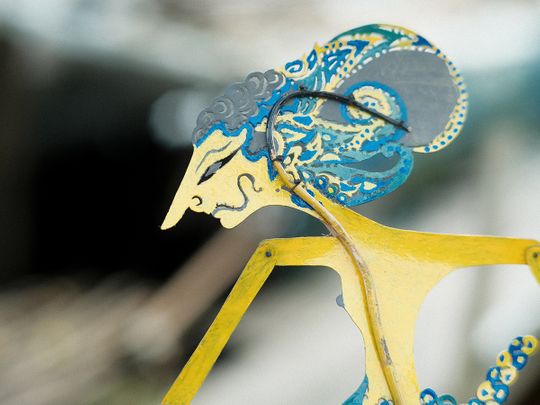
Long before Italian author Carlo Collodi brought a wooden puppet named Pinocchio to life through his fairy tale, storytellers in the island of Java, Indonesia, were creating shadow puppet art that is now considered to be a masterpiece.
Click start to play today’s Spell It, where we learn about wayang, a ‘winning’ art form developed since before the 10th century.
Renowned for its elaborate orchestrated performance, this ancient form of storytelling involves shadow puppets or ‘wayang kulit’. In 2003, the United Nations Educational, Scientific and Cultural Organisation (Unesco) designated it as a Masterpiece of Oral and Intangible Heritage of Humanity.
More than just a puppet performance, wayang kulit has been traditionally used to encourage reflection, guide people and maintain order in society, with stories drawn from the Hindu epics of Ramayana and Mahabharata from India.
Here are some quick facts to help you learn more about this age-old art form:
1. It’s an all-night show
A rhythmic gamelan (a traditional Indonesian instrumental ensemble) joins a melodious sinden (singer) at the start of the performance. The dalang or puppeteer then enchants the audience with a lively story that usually starts in the evening and ends at dawn. The entire performance takes up to eight hours.
2. Puppeteers go to special schools
Not just anybody can become a dalang. Wayang puppeteers take years to master their craft. Acquiring a basic understanding of the characters and how to hold the puppets correctly can take a minimum of six months to learn, at specialised vocational schools. Add in a few more years to master storytelling and conducting music, and you can see why you have to be really passionate about wayang to become a puppeteer.
3. It’s a massive production
A single wayang performance can involve up to 500 puppets. Each character has 8 to 10 puppets depicting different moods or ages, so that the dalang can call them up as required, based on the progression of the story.
4. Audiences are all around
The wayang kulit audience don’t just sit in the front of the stage, but at the back too. The audience at the front can view the puppets’ shadows, while those in the back can see the orchestra, the dalang and the brightly coloured puppets themselves.
5. A work of art
Each wayang kulit is made with an incredible amount of detail and precision, and usually involves a team of artisans, not just one artist. It takes at least one month to create a single wayang.
What do you think of this traditional Indonesian art form? Play today’s Spell It and tell us at games@gulfnews.com.








